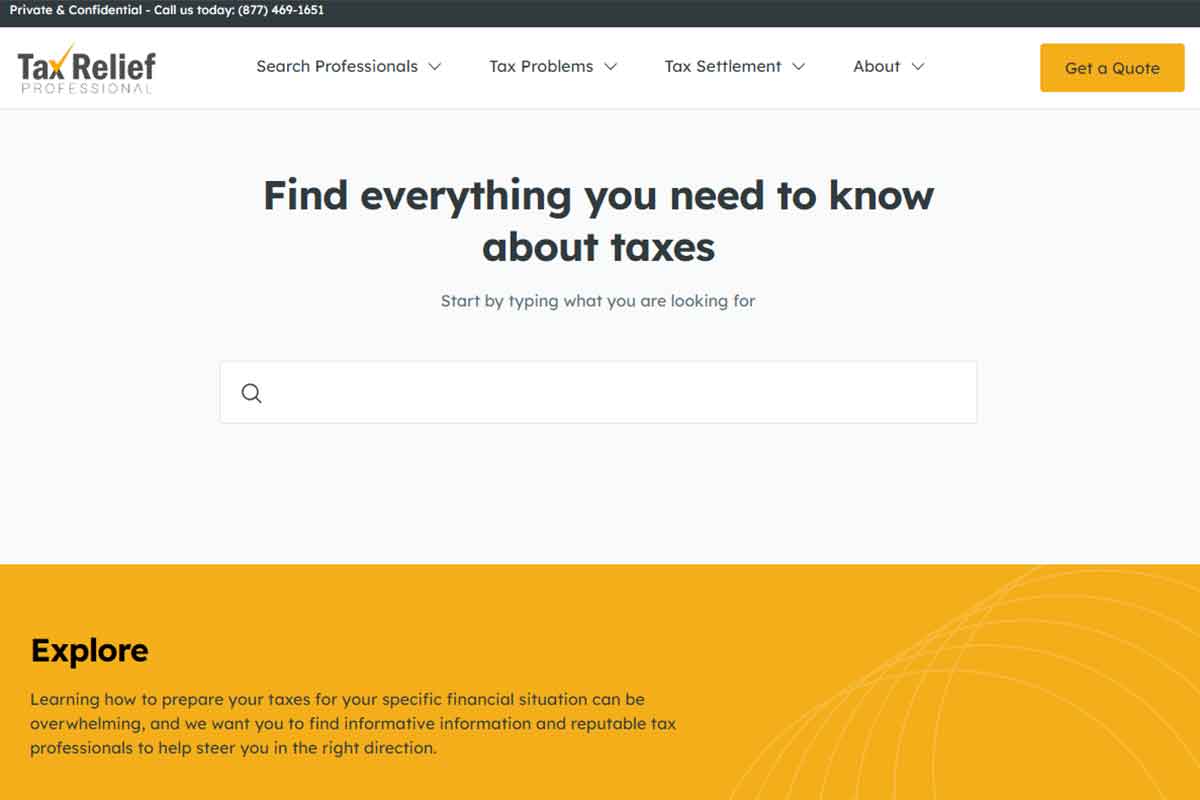Home /
Receiving a letter from the Internal Revenue Service (IRS) can be a source of significant stress and anxiety. These demand letters, while varying in content and severity, share one common characteristic – they signify that the IRS requires your immediate attention and action regarding your tax situation. In such circumstances, partnering with a tax resolution firm can be an invaluable step in addressing and resolving these issues effectively.
IRS Demand Letters
CP14 Notice – Balance Due: This is one of the most common demand letters. It informs you that you owe money on unpaid taxes. This notice typically includes the amount owed, including any penalties and interest.
CP501 Reminder – Balance Due: This is a reminder notice of your outstanding tax debt. It’s a follow-up if you didn’t respond to the CP14.
CP503 – Second Reminder of Balance Due: Sent if you don’t respond to the CP501, this notice is a second reminder that you still have an outstanding balance.
CP504 – Intent to Levy: This is a more urgent notice. It informs you that the IRS intends to levy certain assets (like state tax refunds) if you don’t pay the balance or reach out to them to arrange payment.
Letter 1058 or LT11 – Final Notice of Intent to Levy and Notice of Your Right to a Hearing: This is a final notice before the IRS proceeds with levying your assets. This notice also informs you of your right to a hearing.
CP2000 – Notice of Proposed Adjustment for Underpayment/Overpayment: This letter is sent if the information reported on your tax return does not match the information the IRS received from other sources (like employers or financial institutions). It’s not a direct demand for payment but indicates a discrepancy that needs to be addressed.
CP3219A – Notice of Deficiency: This notice is sent after an audit or IRS review if they propose additional tax is owed. It’s also known as a “90-day letter” because you typically have 90 days to respond.
CP90/CP297 – Final Notice of Intent to Levy and Notice of Your Right to a Hearing: Similar to Letter 1058/LT11, this notice is one of the final steps the IRS takes before levying assets. It also outlines your right to a hearing.
CP523 – Notice of Default on Installment Agreement: This notice is sent if you have an installment agreement with the IRS but have defaulted on the payments.
Letter 3172 – Notice of Federal Tax Lien Filing: This letter informs you that the IRS has filed a tax lien against your property.
The Gravity of IRS Demand Letters
IRS demand letters are not just routine correspondence; they are critical notifications that demand prompt and careful handling. These letters can range from requests for additional information to notifications of overdue taxes, intent to levy, or audit processes. Regardless of the specific nature, each letter carries with it potential consequences that can impact your financial well-being.
Ignoring these letters is not an option. The IRS has the authority to take significant actions against taxpayers who fail to respond, including penalties, interest charges, liens on property, or even wage garnishments. The longer these issues go unresolved, the more complicated and costly they can become.
An IRS demand letter typically contains the following information:
- The total amount due, including penalties and interest for past due taxes.
- The deadline for payment to avoid further collection activity.
- Detailed billing information for each tax period, including penalties and interest.
- A warning about the potential for asset levy if payment is not made.
- Contact information for the office that issued the letter.
If you receive an IRS demand letter, you have several options to resolve the tax debt:
- Pay it off in full.
- Set up a payment plan if you owe less than $50,000, spread over 72 months.
- Apply for Currently Not Collectible status if you cannot afford the monthly payment.
- Consider an Offer in Compromise to settle the debt for less than the full amount owed.
IRS Demand Letters
Receiving a demand letter from the IRS is a signal to take immediate action. Engaging a tax resolution firm offers the expertise, guidance, and representation necessary to navigate these issues effectively. Remember, the goal is not just to resolve the current issue but also to establish compliance and prevent future problems. With professional assistance, you can address IRS demands with confidence, knowing that you are taking the best steps towards a favorable resolution.
What an IRS Demand Letter Contains
A demand letter from the IRS usually has the following:
Amount due
This is the full amount of tax you need to pay plus additional penalties and interest that have accrued for past due taxes. You can find these outlined in the billing summary of the letter.
Deadline of payment
Make the payment before the set deadline for the IRS to stop making further collection activity.
Billing Details
This section contains the breakdown of what you owe, including the amount owed for each tax period, the penalty and interest.
Warning
In the letter, the IRS states that failure to make a payment may result to levy of assets. They will also indicate how long it would it take before they can start making collections.
Contact Information
The letter will have contact information on the office that issued it.
Resolving your tax debt, how to respond to the IRS demand letters
The easiest way to resolve it is to hire someone to complete a response for you. You can also respond yourself. If you already received a final notice of intent to levy, it’s often better to call and do your resolution over the phone.
When there is a lot of extra paperwork requested the IRS may ask for it to be mailed and then give another follow up date or tell you or your representative to wait for a response in the mail.
Your options to resolve the tax debt and stop the demand letters
The main ways to resolve a tax debt are:
- Pay it off in full
- Payment Plan
- Currently Not Collectible
- Offer In Compromise
The first two are pretty simple as long as you owe less than $50,000 since the IRS will take a payment plan spread out over 72 months. It’s simple if you can afford the monthly payment. If not, Currently Not Collectible and Offer In Compromise are your best options.
Don’t want to handle it yourself? Drop us a line at our Contact page or call us at (877)469-1651.
Sources:











